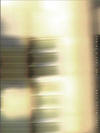The Last 4 Things
Kate Greenstreet’s deeply elegiac second full-length poetry book The Last 4 Things is an expansive meditation on a life’s moments and memories flashing before one’s eyes, but very slowly, each one lingering. The tone, wounded without being outraged, urgent but not desperate, gives the sense that what is being described is from the deep past. Some of it may be, but much of it is reflection also of how life should be lived, present tense. Descriptions are by turns elemental (“We worshipped these names as the names of our gods”) and domestic (“because we had the rakes, / we had to stop every little while and / do some raking.”). While the speaker and the characters drifting through the poems are artistic, they are portrayed also as earnest and industrious. Passages feel like they are pulled from black and white snapshots, yellowed pieces of paper, American rural life.
Kate Greenstreet’s deeply elegiac second full-length poetry book The Last 4 Things is an expansive meditation on a life’s moments and memories flashing before one’s eyes, but very slowly, each one lingering. The tone, wounded without being outraged, urgent but not desperate, gives the sense that what is being described is from the deep past. Some of it may be, but much of it is reflection also of how life should be lived, present tense. Descriptions are by turns elemental (“We worshipped these names as the names of our gods”) and domestic (“because we had the rakes, / we had to stop every little while and / do some raking.”). While the speaker and the characters drifting through the poems are artistic, they are portrayed also as earnest and industrious. Passages feel like they are pulled from black and white snapshots, yellowed pieces of paper, American rural life.
The Last 4 Things is two long poems – the title poem, which is over fifty pages long, and “56 Days,” a sequence of prose poems, about thirty pages in length. The formal irregularity of the poems themselves slow the pace, giving each utterance a measure of gravity. The book opens with the idea that normal ways of life suddenly feel chocked with portent. That existence is suddenly felt to be more precarious.
To leave home without making the bed,
it’s like building a house of cards.
You have to know what you’re doing.
Or be lucky. Or just very quiet.
Her first book case sensitive is by turns a noirish woman-on-the run account; family memoir; and forensic investigation. Her chapbook This is Why I Hurt You, released after her first book and before her second, scrutinizes the usefulness of art and lays bare the consequences of using one’s life as fodder for art – how it leaves you and the people you love vulnerable.
As in her earlier work, a lot of attention is given to art, but unobtrusively, whether detailing the joy of making (“We did some dyeing on my birthday / and took apart some slacks / and skirts from Goodwill, for the wool.”) or how it influences and focuses perception (“She considers a field. The lie the camera tells about that moment is a better reminder than the memory of the moment could have been.”). There is some unease in the line “A girl who is nine plays a nine-year-old girl,” because it suggests the poet recognizes that art has become the default mode for articulating emotion and desire, that everything is a mediated experience.
As “The Last 4 Things” progresses and throughout “56 Days,” there is a greater prevalence of religious imagery. Indeed, the opening canto riffs on St. Paul’s conversion: “The first leaves fell this morning / (my own eyes)”. Words like “mortal,” “proverbs,” “fate,” and “alms” begin to enter into the work. Unlike with the references to art, there is a lack of skepticism that is given to lines like:
One, effort to restrain evil.
Two, effort to abandon evil.
Three, effort to develop good.
Four, effort to maintain good.
which may suggest, ironically maybe, that in the world of these poems, religion is of an order lower than art. Religious utterances sometimes have an overheard feel in the poem, “Let us know our end. Let us know our end and the number of our days. This is how he talks to me, a tree losing its leaves.” For Greenstreet, religion may be emptied of its value as truth, but not its literary beauty, which the poet subtly and forcefully uses the way a painter would use a certain color to evoke a response.
Fissures between the lines and cantos give the book a non-narrative quality that should be familiar to the reader of contemporary experimental poetry. While meaning sometimes breaks down, the plaintive tone is always consistent, like hearing someone’s voice through a wall in another room without understanding every word that is said. One gets a sense throughout of the speaker remembering back to a time of crisis. The implication being that the crisis was not in the end fatal, but there being an indelible memory of how it made the speaker act and feel at the time.
The book comes with a DVD. On it, Greenstreet recites selections from the poems over footage of exteriors: trees, chimneys, trains and landscapes. If you have heard Greenstreet read out loud, you know it is worth the price of admission to have a recording of her reading her work.





